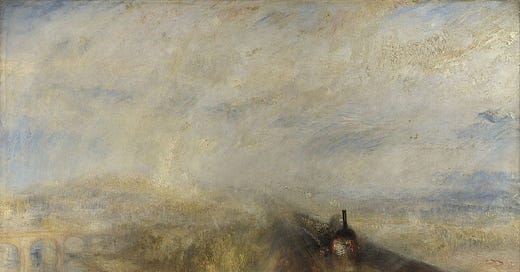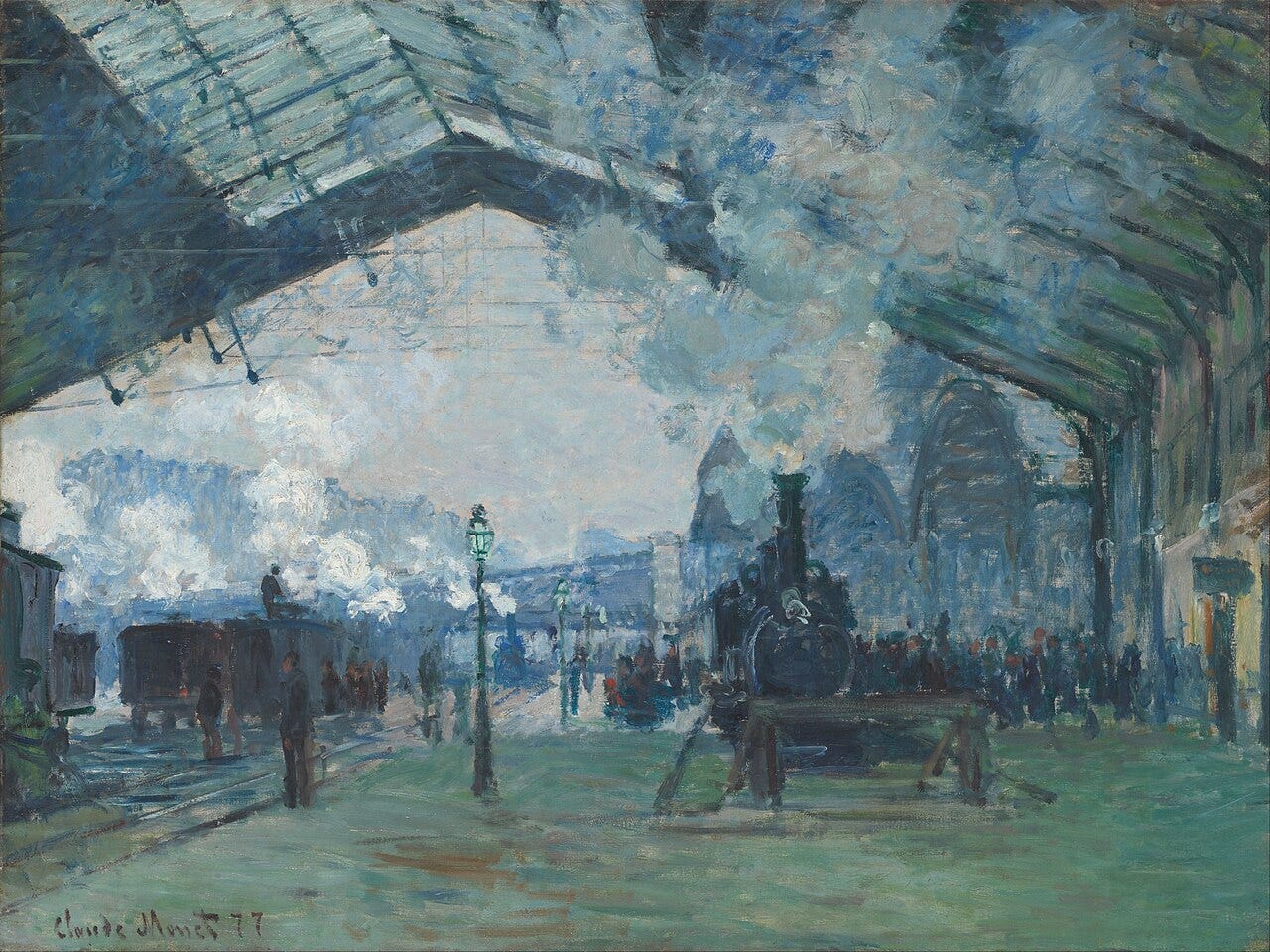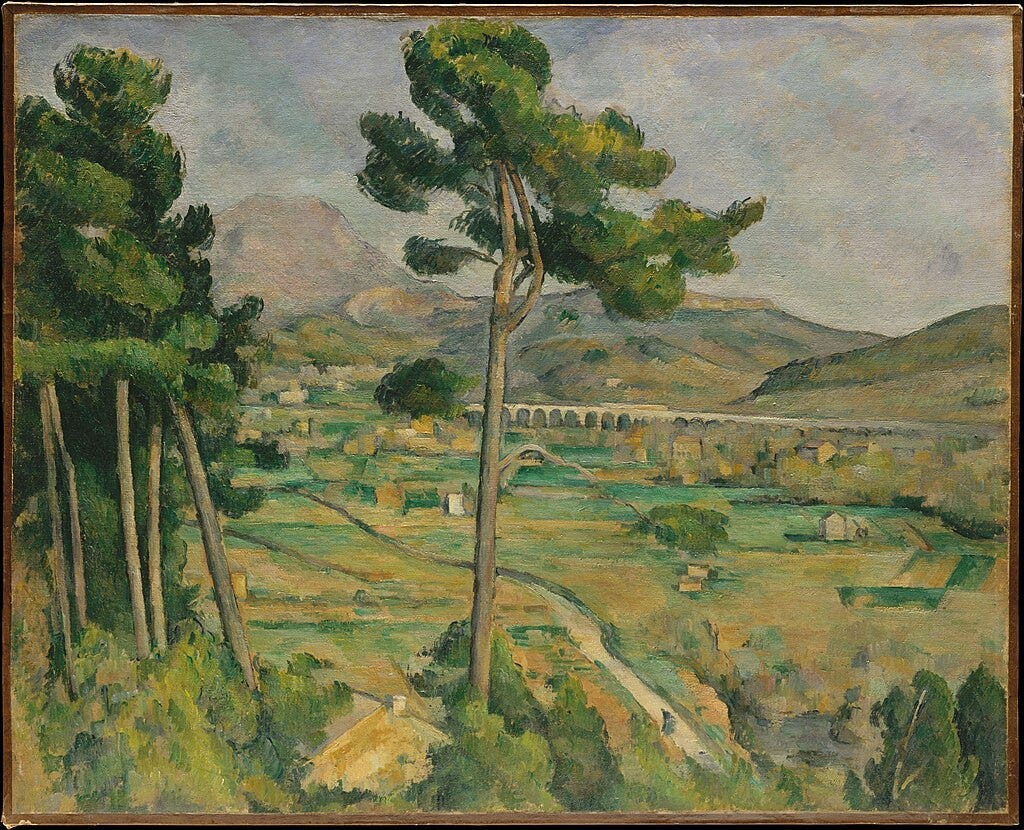The Industrial Revolution & railways
Starting in the late 17th century, the Industrial Revolution brought significant technological advancements such as new machine tools, steam power and improve methods for producing iron. This not only generated the necessity but also the capability to develop railways across Great Britain, profoundly influencing social and territorial organization.
That is precisely what Turner depicted in ‘Rain, Steam and Speed’. Taylor's stone road bridge stands on the left, in the background, while in the foreground, a steam engine rushes toward us on the Maidenhead Railway Bridge, inaugurated in 1839, just a few years prior to the painting's creation. Unlike the stone bridge, it is made of brick and sparked controversy when it was built due to its innovative, long and low-height arches, which detractors claimed would lack stability. The juxtaposition of both bridges, in terms of usage and construction methods, already illustrates the progress achieved in less than a century. Both bridges remain visible and operational to this day.
We are thus looking east towards London with the train heading towards Bristol or Exeter, thanks to this newly opened line operated by the Great Western Railways. The locomotive, named “Firefly”, pulls a train of roofless wagons for passengers paying the cheapest fares. These trains were capable of traveling at speeds of up to 50 miles per hour, surpassing those of a galloping horse.
To compose his tableau, Turner draws from real-life situations and sensations: we can almost hear the approaching train from the opposite direction, compelling us to turn our heads so as not to miss this modern spectacle. Turner transforms this simple moment into a masterpiece.
Speed vs. country life
The painting captures the awe-inspiring power and speed of the new railway technology. The steam engine bursts through the hazy rain and mist, its black iron chimney rejecting smoke as it hurtles towards the viewer. Turner used exaggerated foreshortening of the viaduct to convey a sense of breathtaking velocity, as he already did in ‘The Burning of the Houses of Lords and Commons’ with the Westminster bridge. Turner further emphasizes this effect, particularly with the double railway line crossing the bridge in a single narrow line.
The work contrasts the natural world, symbolized by the rain, river, with the man-made marvel of the locomotive and bridge. Initially, the impression might seem indistinct - a blend of atmosphere, smoke, water, and movement - but the eye is immediately drawn to the contrast between the black locomotive chimney and the vibrant red-brown hue of the viaduct, suggesting the ascendancy of mankind's newfound abilities over nature.
The impression of the train's speed contrasts with the tranquility of the small boat on the river or the simplicity of the horse-drawn cart. Turner underlined this notion with a detail that has nearly vanished over time: a hare painted on the rail track, representing the speed of the natural world. Known as one of the swiftest animal, we doubt the hare's ability to escape. Its gradual disappearance from the canvas only reinforces the idea that the mechanical world has supplanted rural England's old ways.
Precursor: trains & impressionism
Turner seemed to have been a generation ahead of other artists, as he was among the few painters of his time to consider industrial advancement as a commendable subject of art. He suggests that modern technology is a reality racing towards us - a central question, given that the advent of the first trains, like nearly every new technology, sparked fear. Probably that today’s passengers would not be willing to sit in open-air carriages exposed to rain and wind, without the modern confort or the sense of security.
Many consider Turner a precursor to Impressionism with his magnificent and evocative landscapes. With this painting, he also explores a subject that Impressionists would delve into 30 years later: the train.









